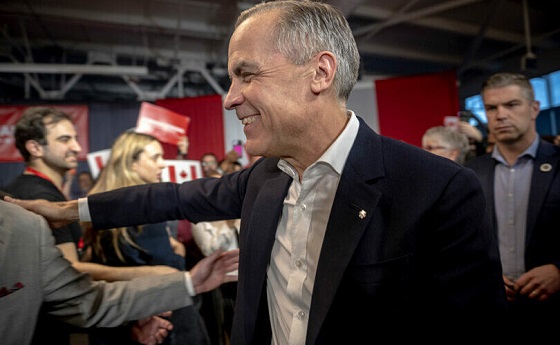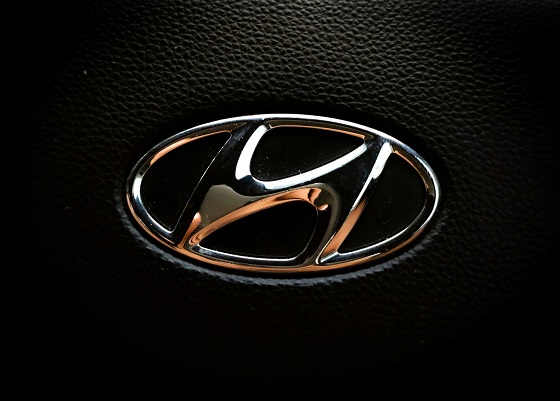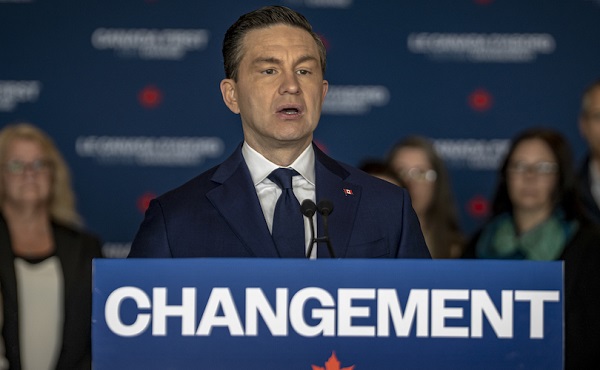Alberta
Olivia and Noah most popular baby names in 2020

Olivia continued a record streak as the most popular baby girl’s name in Alberta in 2020 while Noah remained in the top spot for baby boys.
Alberta families welcomed 49,030 babies in 2020 – 25,160 boys and 23,870 girls. Olivia was the most popular girl’s name for the eighth year in a row, giving it the longest popularity streak for any girl’s name in Alberta since 1980. Noah placed first on the boys’ names list for the second consecutive year.
Other popular names for girls were Emma, Charlotte, Ava and Sophia. Oliver, Liam, Benjamin and William rounded out the top five names for boys.
Alberta remains a province of many cultural and ethnic backgrounds, and many of our youngest members have names reflecting that diversity. Alberta is home to baby girls named Amara, Amaya, Zahra, Zoya, Baani, Danika, Raya, Thalia, Yuna and Chimamanda. Some of Alberta’s youngest boys are named Mateo, Ahmed, Bodhi, Yusuf, Zorawar, Arjun, Gurbaaz, Miguel, Abdul and Idris.
“Last year was difficult for everyone, but every new baby that an Alberta family welcomed brings joy and also hope for the future. Whether parents welcomed their firstborn or a sibling to other children, they can count on the same thing: Alberta is a great place to raise a family and we have a strong future ahead of us.”
In a year unlike any other, positivity seemed to be a popular theme for some new parents, with names like Hope, Peace, Faith, Charity, Joy, Happy and Brave appearing on the list of registered names.
Some parents also seemed to be inspired by athletes (Kobe, Muhammad-Ali, Beckham), mythology (Artemis, Persephone, Aries, Zeus), music (Dre, Zeppelin, Bowie), video games (Zelda, Link, Eevee), literature (Guinevere, Atticus) and places (Cairo, Nile, Phoenix).
Quick facts
- Notable changes to the 2020 lists:
- Isla appeared in the top 10 list for girls for the first time. The name was 12th most popular among girls in 2019.
- Theodore and Levi appeared in the top 10 list for boys for the first time. The names were 19th and 27th most popular among baby boys in 2019, respectively.
- Lily increased in popularity among girls’ names, from 24th most popular in 2019 to ninth in 2020.
- Ethan dropped to 12th place among the most popular boys’ names, after appearing in the top 10 list every year since 2000.
- Historically, girls’ names that held the No. 1 spot for the longest consecutive time period include:
- Jessica: six years (1990-1995)
- Emily: five years (1998-2002)
- Olivia: eight years (2013-2020)
- Historically, boys’ names that held the No. 1 spot for the longest consecutive time period include:
- Matthew: five years (1995-1999)
- Ethan: nine years (2001-2009)
- Liam: seven years (2010-2016)
- The highest birth count recorded in recent history for Alberta was 56,744, recorded in 2015.
- Parents have up to one year to register their child’s birth. As a result, the list of 2020 baby names and birth statistics may change slightly.
Girls’ names and frequency (top 10)
(In brackets is the number of children with each name)
| Place | Girl names (2020) | Girl names (2019) | Girl names (2018) | Girl names (2017) | Girl names (2016) |
| 1 | Olivia (236) | Olivia (229) | Olivia (235) | Olivia (236) | Olivia (292) |
| 2 | Emma (184) | Charlotte (188) | Emma (230) | Emma (215) | Emma (249) |
| 3 | Charlotte (161) | Sophia (181) | Charlotte (175) | Charlotte (187) | Sophia (215) |
| 4 | Ava (159) | Emma (178) | Emily (164) | Ava (184)
Sophia (184) |
Ava (207) |
| 5 | Sophia (151) | Ava (161) | Ava (161) | Emily (159) | Emily (187) |
| 6 | Amelia (145) | Amelia (159) | Abigail (153) | Abigail (154) | Charlotte (180) |
| 7 | Isla (133) | Emily (150) | Harper (150) | Amelia (149) | Amelia (172) |
| 8 | Emily (127) | Abigail (141) | Sophia (146) | Isabella (141) | Abigail (171) |
| 9 | Lily (123) | Hannah (137) | Amelia (145) | Aria (129)
Chloe (129) |
Chloe (166) |
| 10 | Abigail (114) | Elizabeth (124) | Elizabeth (130) | Lily (127) | Aria (137) |
Boys’ names and frequency (top 10)
(In brackets is the number of children with each name)
| Place | Boy names (2020) | Boy names (2019) | Boy names (2018) | Boy names (2017) | Boy names (2016) |
| 1 | Noah (239) | Noah (275) | Liam (225) | Noah (250) | Liam (277) |
| 2 | Oliver (229) | Liam (234) | Oliver (212) | Liam (244) | Benjamin (252) |
| 3 | Liam (206) | Oliver (225) | Noah (199) | Benjamin (229) | Lucas (247) |
| 4 | Benjamin (182) | Ethan (213) | Ethan (188) | Logan (226) | Oliver (230) |
| 5 | William (178) | Jack (198) | Logan (182)
Lucas (182) |
Lucas (216) | Noah (228) |
| 6 | Jack (169) | William (185) | Jacob (181) | William (213) | William (213) |
| 7 | Lucas (163) | Lucas (174) | William (178) | Ethan (192) | Ethan (205) |
| 8 | Theodore (159) | Owen (167) | Benjamin (176) | Oliver (190) | Jack (197) |
| 9 | Levi (153) | Benjamin (163) | Jack (167) | Jack (189) | Lincoln (192) |
| 10 | Owen (152) | Jacob (162) | Alexander (158)
James (158) |
Jacob (178) | Owen (189) |
Alberta
Red Deer Justice Centre Grand Opening: Building access to justice for Albertans

The new Red Deer Justice Centre will help Albertans resolve their legal matters faster.
Albertans deserve to have access to a fair, accessible and transparent justice system. Modernizing Alberta’s courthouse infrastructure will help make sure Alberta’s justice system runs efficiently and meets the needs of the province’s growing population.
Alberta’s government has invested $191 million to build the new Red Deer Justice Centre, increasing the number of courtrooms from eight to 12, allowing more cases to be heard at one time.
“Modern, accessible courthouses and streamlined services not only strengthen our justice
system – they build safer, stronger communities across the province. Investing in the new Red Deer Justice Centre is vital to helping our justice system operate more efficiently, and will give people in Red Deer and across central Alberta better access to justice.”

Government of Alberta and Judiciary representatives with special guests at the Red Deer Justice Centre plaque unveiling event April 22, 2025.
On March 3, all court services in Red Deer began operating out of the new justice centre. The new justice centre has 12 courtrooms fully built and equipped with video-conference equipment to allow witnesses to attend remotely if they cannot travel, and vulnerable witnesses to testify from outside the courtroom.
The new justice centre also has spaces for people taking alternative approaches to the traditional courtroom trial process, with the three new suites for judicial dispute resolution services, a specific suite for other dispute resolution services, such as family mediation and civil mediation, and a new Indigenous courtroom with dedicated venting for smudging purposes.
“We are very excited about this new courthouse for central Alberta. Investing in the places where people seek justice shows respect for the rights of all Albertans. The Red Deer Justice Centre fills a significant infrastructure need for this rapidly growing part of the province. It is also an important symbol of the rule of law, meaning that none of us are above the law, and there is an independent judiciary to decide disputes. This is essential for a healthy functioning democracy.”
“Public safety and access to justice go hand in hand. With this investment in the new Red Deer Justice Centre, Alberta’s government is ensuring that communities are safer, legal matters are resolved more efficiently and all Albertans get the support they need.”
“This state-of-the-art facility will serve the people of Red Deer and surrounding communities for generations. Our team at Infrastructure is incredibly proud of the work done to plan, design and build this project. I want to thank everyone, at all levels, who helped make this project a reality.”
Budget 2025 is meeting the challenge faced by Alberta with continued investments in education and health, lower taxes for families and a focus on the economy.

Quick facts
- The new Red Deer Justice Centre is 312,000 sq ft (29,000 m2). (The old courthouse is 98,780 sq ft (9,177 m2)).
- The approved project funding for the Red Deer Justice Centre is about $191 million.
Alberta
CPP another example of Albertans’ outsized contribution to Canada

From the Fraser Institute
By Tegan Hill
Amid the economic uncertainty fuelled by Trump’s trade war, its perhaps more important than ever to understand Alberta’s crucial role in the federation and its outsized contribution to programs such as the Canada Pension Plan (CPP).
From 1981 to 2022, Albertan’s net contribution to the CPP—meaning the amount Albertans paid into the program over and above what retirees in Alberta received in CPP payments—was $53.6 billion. In 2022 (the latest year of available data), Albertans’ net contribution to the CPP was $3.0 billion.
During that same period (1981 to 2022), British Columbia was the only other province where residents paid more into the CPP than retirees received in benefits—and Alberta’s contribution was six times greater than B.C.’s contribution. Put differently, residents in seven out of the nine provinces that participate in the CPP (Quebec has its own plan) receive more back in benefits than they contribute to the program.
Albertans pay an outsized contribution to federal and national programs, including the CPP because of the province’s relatively high rates of employment, higher average incomes and younger population (i.e. more workers pay into the CPP and less retirees take from it).
Put simply, Albertan workers have been helping fund the retirement of Canadians from coast to coast for decades, and without Alberta, the CPP would look much different.
How different?
If Alberta withdrew from the CPP and established its own standalone provincial pension plan, Alberta workers would receive the same retirement benefits but at a lower cost (i.e. lower CPP contribution rate deducted from our paycheques) than other Canadians, while the contribution rate—essentially the CPP tax rate—to fund the program would likely need to increase for the rest of the country to maintain the same benefits.
And given current demographic projections, immigration patterns and Alberta’s long history of leading the provinces in economic growth, Albertan workers will likely continue to pay more into the CPP than Albertan retirees get back from it.
Therefore, considering Alberta’s crucial role in national programs, the next federal government—whoever that may be—should undo and prevent policies that negatively impact the province and Albertans ability to contribute to Canada. Think of Bill C-69 (which imposes complex, uncertain and onerous review requirements on major energy projects), Bill C-48 (which bans large oil tankers off B.C.’s northern coast and limits access to Asian markets), an arbitrary cap on oil and gas emissions, numerous other “net-zero” targets, and so on.
Canada faces serious economic challenges, including a trade war with the United States. In times like this, it’s important to remember Alberta’s crucial role in the federation and the outsized contributions of Alberta workers to the wellbeing of Canadians across the country.
-

 2025 Federal Election23 hours ago
2025 Federal Election23 hours agoTrump Has Driven Canadians Crazy. This Is How Crazy.
-

 2025 Federal Election1 day ago
2025 Federal Election1 day agoCarney’s Hidden Climate Finance Agenda
-

 2025 Federal Election2 days ago
2025 Federal Election2 days agoFormer WEF insider accuses Mark Carney of using fear tactics to usher globalism into Canada
-

 2025 Federal Election1 day ago
2025 Federal Election1 day agoThe Anhui Convergence: Chinese United Front Network Surfaces in Australian and Canadian Elections
-

 2025 Federal Election1 day ago
2025 Federal Election1 day agoStudy links B.C.’s drug policies to more overdoses, but researchers urge caution
-

 Automotive11 hours ago
Automotive11 hours agoHyundai moves SUV production to U.S.
-

 2025 Federal Election2 days ago
2025 Federal Election2 days agoConservatives promise to ban firing of Canadian federal workers based on COVID jab status
-

 International2 days ago
International2 days agoPope Francis Got Canadian History Wrong



